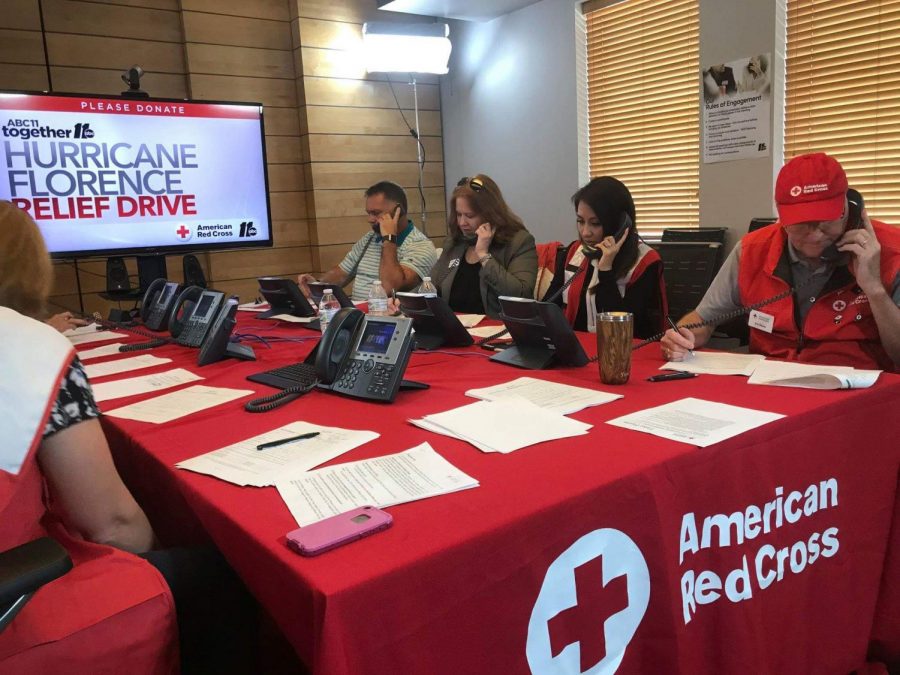Chicago responds to Hurricane Florence
September 24, 2018
Hurricane Florence made landfall in the Carolinas Sept. 14, causing widespread damage along the Southeastern coast, including record-breaking rainfall and flooding, leading to approximately 42 deaths across multiple states. As the storm continues through the Atlantic Ocean, those affected are left to clean up the destruction left behind.
The American Red Cross of Chicago and Northern Illinois is sending workers to assist in the wake of the hurricane.
In a Sept. 11 statement released on the Red Cross’ website, the nonprofit organization said it is preparing to help as many as 100,000 people in affected areas along the Southeastern coast by providing evacuation shelters.
“This is a dangerous storm predicted to grow even stronger, and the Red Cross urges people in its path to obey evacuation orders and get ready now,” the nonprofit stressed on their website Sept. 11.
Some students at Columbia are hearing about the hurricane’s devastation from loved ones back home.
Claire McConnell, a freshman musical theatre major, is from South Carolina and said people from her hometown were more prepared for Hurricane Florence because of the flooding they experienced in 2015.
“[Organizations such as the Red Cross are] helpful now because [people in the Carolinas] knew [the storm] was coming, and they knew where it was going to hit,” McConnell said. “I do remember in 2015, when we had the flood, no one was expecting that was going to happen. A lot of people lost [belongings] because of it.”
October 2015 brought one of the most devastating rainfall totals, as well as flooding, in modern American history in South Carolina, according to The Weather Channel.
Along with the rain, there was catastrophic flooding. More than 17.72 inches of rain fell in a 24-hour period.
Katie O’Connell, a Chicago native living in Charlotte, North Carolina, said she did not feel the same effects of Hurricane Florence that was felt in other areas of the state.
“We had some flash-flooding, streets [flooded] and power outages in Charlotte that lasted [a day], but beyond that, we did not see much of the damage,” O’Connell said. “Luckily for me and [some] people [I know], we didn’t see [the damage] the coast saw, but I do have friends [who] live on the coast, and they had a lot of flooding, a lot of damage to houses. [Some] stayed and didn’t have any issues, but that doesn’t mean that other people surrounding them don’t [need help also].”
According to a Sept. 10 KTLA report, more than one million people along the Southeastern coast had mandatory evacuation.
National Guard members were being mobilized in affected areas. President Trump declared an emergency in the Carolinas, allowing them to have access to federal funds.
“My father and stepmother were impacted by [the storm],” said Willie Olds Jr., an Indian Trail, North Carolina, resident. “They are where Hurricane Florence actually touched down.”
Olds said the flooded waters reached his parents’ home Sept. 14, and they were unable to return home until the water subsided on Sept. 18.
“If the Red Cross communicated with people from the less-impacted areas and let them know that they are not forgotten, but [that] they are focusing more of their effort on the areas that need the most help, that would be good for the people in shelters waiting,” Olds said.








